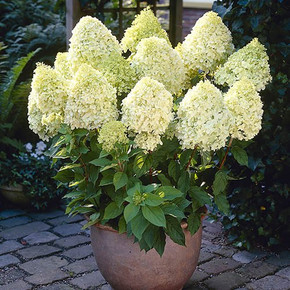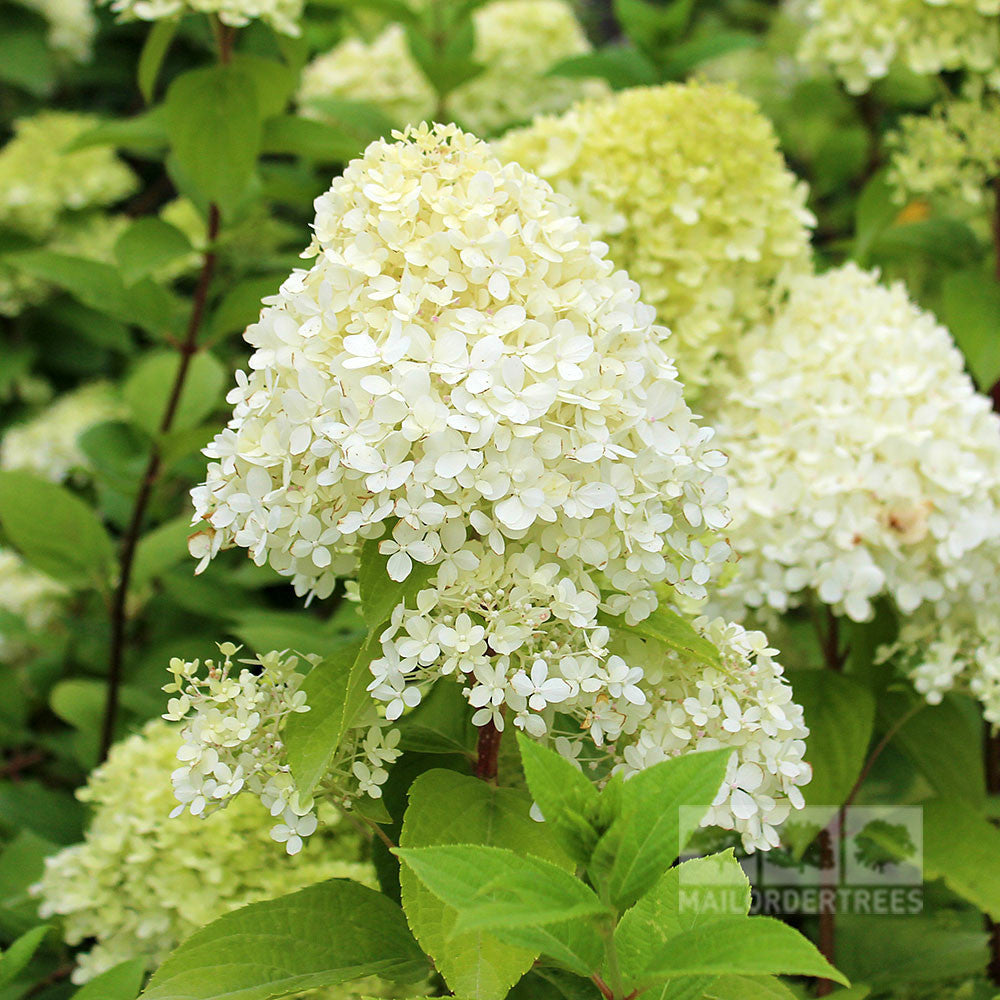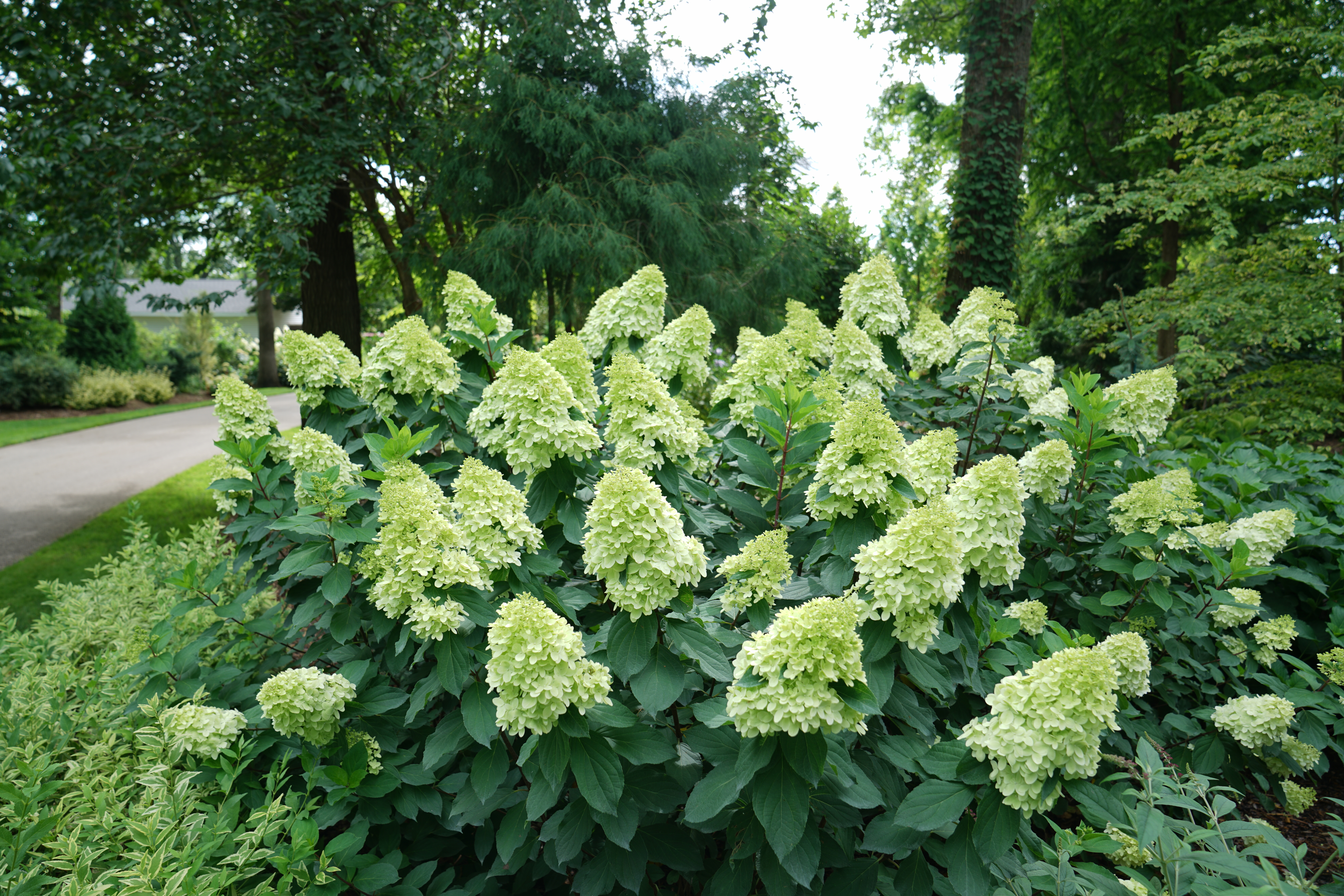Limelight Hydrangeas: The Showstopping Shrub That's Easy To Grow
Limelight hydrangeas are a popular choice for gardeners because they are easy to grow and have beautiful, showstopping blooms. These shrubs can grow up to 6 feet tall and 4 feet wide, and they produce large, conical flowers that range in color from lime green to creamy white to dusty rose and even burgundy. The flowers typically bloom in July and August, but they can last for several weeks.
Limelight hydrangeas are relatively low-maintenance plants. They prefer full sun to partial shade, and they need well-drained soil. They should be watered regularly, especially during hot, dry weather. In the spring, you can fertilize them with a balanced fertilizer.
Limelight hydrangeas are not as susceptible to pests and diseases as some other types of hydrangeas. However, they can be susceptible to powdery mildew, which can cause white, powdery spots on the leaves. If your limelight hydrangeas develop powdery mildew, you can treat it with a fungicide.
Limelight hydrangeas are a versatile plant that can be used in a variety of landscape settings. They can be planted as a standalone specimen, in a hedgerow, or in a mixed border. They can also be grown in containers.
If you are looking for an easy-to-grow, beautiful shrub with showstopping blooms, limelight hydrangeas are a great option.
Main Content
Where to Plant Limelight Hydrangeas
Limelight hydrangeas prefer full sun to partial shade. They can tolerate full sun in cooler climates, but they may need some afternoon shade in warmer climates. They also need well-drained soil. If your soil is not well-drained, you can improve drainage by adding sand or gravel to the planting hole.
How to Plant Limelight Hydrangeas
To plant a limelight hydrangea, dig a hole that is twice as wide as the rootball of the plant. Add some compost or other organic matter to the bottom of the hole. Place the plant in the hole and backfill with soil. Water the plant thoroughly.
How to Care for Limelight Hydrangeas
Limelight hydrangeas are relatively low-maintenance plants. They need to be watered regularly, especially during hot, dry weather. You should also fertilize them in the spring with a balanced fertilizer.
In the fall, you can prune your limelight hydrangeas. Remove any dead, diseased, or damaged branches. You can also shorten some of the branches to encourage bushier growth.
Pests and Diseases
Limelight hydrangeas are not as susceptible to pests and diseases as some other types of hydrangeas. However, they can be susceptible to powdery mildew, which can cause white, powdery spots on the leaves. If your limelight hydrangeas develop powdery mildew, you can treat it with a fungicide.
How to Use Limelight Hydrangeas in the Landscape
Limelight hydrangeas are a versatile plant that can be used in a variety of landscape settings. They can be planted as a standalone specimen, in a hedgerow, or in a mixed border. They can also be grown in containers.
If you are looking for a plant that will add some drama to your landscape, limelight hydrangeas are a great option. Their large, showy blooms will be sure to turn heads.
Conclusion
Limelight hydrangeas are a beautiful, easy-to-grow shrub that can add a touch of elegance to any landscape. If you are looking for a plant that will provide you with years of enjoyment, limelight hydrangeas are a great choice.
If you're looking for a hydrangea that is both beautiful and easy to care for, then Hydrangea paniculata 'Limelight' is the perfect choice for you. This hardy shrub produces large, cone-shaped flowers that start out lime green and gradually fade to creamy white, then pink, and finally beige. The flowers are held upright on sturdy stems, making them perfect for displaying in mixed shrub borders or as a stand-alone specimen.
'Limelight' hydrangeas are not fussy about soil type, but they do prefer moist, well-drained soil. They can be grown in full sun to partial shade, but they will produce the best flowers in full sun. 'Limelight' hydrangeas are also relatively cold-hardy, making them a good choice for most climates.
If you're interested in learning more about 'Limelight' hydrangeas, I recommend visiting . This website has a wealth of information about the plant, including its care requirements, planting instructions, and pest and disease prevention tips. You can also find photos of the plant in bloom, as well as helpful videos and articles.
FAQ of hydrangea paniculata limelight
Q: What are the light and soil requirements for Hydrangea paniculata Limelight?
A: Hydrangea paniculata Limelight prefers full sun in cold climates, but can tolerate afternoon shade in warmer climates. It does require well-drained soil that does not remain soggy for any amount of time.
Q: How do I care for Hydrangea paniculata Limelight?
A: Hydrangea paniculata Limelight is a relatively low-maintenance plant. It needs to be watered regularly, especially during hot, dry weather. It should also be fertilized in the spring with a balanced fertilizer. In the fall, the spent flowers should be removed to encourage new growth the following year.
Q: How do I propagate Hydrangea paniculata Limelight?
A: Hydrangea paniculata Limelight can be propagated by taking cuttings in the spring or summer. To do this, cut a 5-6 inch long cutting from a healthy branch. Remove the bottom leaves and dip the cutting in rooting hormone. Plant the cutting in a pot of well-draining soil and keep it moist. The cutting should root in 4-6 weeks.
Q: What are the common pests and diseases of Hydrangea paniculata Limelight?
A: Hydrangea paniculata Limelight is susceptible to a few pests and diseases, including scale, aphids, and powdery mildew. Scale can be controlled by scraping the insects off the leaves with a dull knife. Aphids can be controlled by spraying the plant with insecticidal soap or neem oil. Powdery mildew can be controlled by spraying the plant with a fungicide.
Q: What is the best time to plant Hydrangea paniculata Limelight?
A: Hydrangea paniculata Limelight can be planted in the spring or fall. If planting in the spring, wait until the danger of frost has passed. If planting in the fall, plant the hydrangea at least 6 weeks before the first frost.
Image of hydrangea paniculata limelight
- Hydrangea paniculata Limelight in full bloom. The flowers are a bright white color with a slight pink tint. They are arranged in large, conical clusters that can reach up to 12 inches in diameter.
- Hydrangea paniculata Limelight in a garden setting. The shrub is surrounded by other flowers and plants, creating a colorful and lush landscape.

- Close-up of Hydrangea paniculata Limelight flowers. The individual flowers are small and delicate, but they come together to create a stunning display.

- Hydrangea paniculata Limelight in the fall. The flowers have faded to a light pink color, but they are still a beautiful sight to behold.

- Hydrangea paniculata Limelight in a vase. The flowers can be cut and enjoyed indoors for weeks.


Post a Comment for "Limelight Hydrangeas: The Showstopping Shrub That's Easy To Grow"